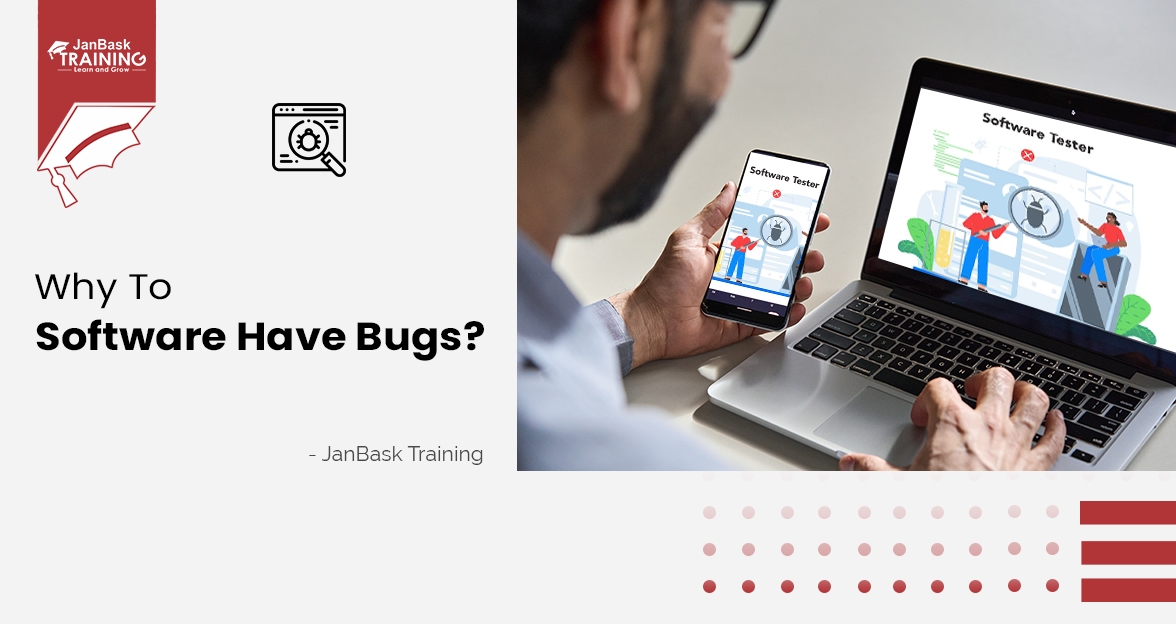Christmas Offer : Get Flat 35% OFF on Live Classes + $999 Worth of Study Material FREE! - SCHEDULE CALL
The software development life cycle (SDLC) is a process followed by software developers to design, develop, test, and deploy high-quality software. The SDLC methodology provides a structured approach to software development, ensuring quality and efficiency. In this article, we will discuss how SDLC plays a vital role in Quality Assurance (QA) and why it is essential for every organization to follow this methodology. For an in-depth understanding of SDLC, our online QA training course helps you explore more about association rules data mining, the most effective tool of data science.
Software Development Life Cycle or SDLC refers to a set of processes developers use to create high-quality software applications. It includes various stages, such as planning, designing, coding, testing, and deployment of the application. Each stage has unique objectives and deliverables, which must be achieved before moving on to the next phase.The first stage of SDLC is the planning phase, which involves identifying the goals and objectives of the software project. This includes understanding what problem or need the software will address, defining user requirements, determining budget and timelines, and establishing a project team. During this phase, assessing risks that may impact the development process is important.
Developers create a blueprint for the application's function in the design phase. This includes creating diagrams to illustrate how different components of the application will work together and developing detailed specifications for each feature. The goal is to ensure that all stakeholders clearly understand what they can expect from the final product.Once the design is complete, developers begin coding - writing actual code in programming languages like Java or Python. This can be one of the most time-intensive phases in SDLC since it requires careful attention to detail and testing at every step along the way.
Testing is essential throughout all stages of SDLC but becomes especially critical during this next stage, where developers test their code thoroughly before moving on to deployment. They check for bugs or errors that could cause problems later on down the line when end-users begin using it themselves.
In today's fast-paced world, where technology changes rapidly, it’s crucial for organizations to ensure their products meet customer expectations while being delivered within time constraints. This is where QA comes into play; it helps identify defects early so they can be fixed before release, saving time and money.SDLC plays an essential role in ensuring quality throughout each project lifecycle phase, from requirements gathering through deployment. By following a well-defined process with clear objectives at each stage, teams can work together more efficiently toward achieving common goals.
Finally comes deployment - releasing your newly developed software into production environments where users can access its functionality firsthand! It's crucial at this point to ensure everything has been tested rigorously beforehand and monitor performance post-deployment so any issues are addressed promptly if necessary.Practicing proper SDLC techniques ensures that applications are built efficiently while minimizing risk factors like cost overruns due to missed deadlines or poor quality control measures implemented along each step toward completion!
SDLC, or Software Development Life Cycle, is a process that outlines the steps involved in developing software. It includes planning, designing, implementing, testing, and maintaining the software after deployment. The importance of SDLC in software testing cannot be overstated because it provides a framework for ensuring quality throughout each development phase.Furthermore, SDLC ensures that all requirements are captured accurately from stakeholders before coding begins. This helps developers prioritize features based on business needs and avoids unnecessary rework later on due to missed requirements.
Another important aspect of SDLC is its focus on testing throughout the development cycle. Testing helps identify defects early on so they can be fixed before release, saving time and money. Additionally, it ensures that applications meet user expectations by verifying their functionality under different scenarios and conditions.For example, if an e-commerce website was being developed without following an SDLC approach, there could be several issues during launch, such as incomplete product information or incorrect pricing information leading to customer dissatisfaction and causing loss of revenue for the organization.
Adopting an appropriate SDLC methodology enhances efficiency by streamlining processes while reducing risks associated with project delivery. It also contributes significantly towards delivering high-quality products within specified timelines while adhering to budget constraints, thereby increasing customer satisfaction levels and resulting in higher profitability for organizations across healthcare and finance domains.

1. Requirement Gathering & Analysis:
This phase is the first stage of SDLC and involves gathering information about what the system should do, who will use it, and how it will function. During this stage, stakeholders are interviewed to determine their needs and requirements for the system under development. A team of analysts then analyzes this information to identify potential issues or conflicts that may arise during development.Examples of tasks involved in this phase include creating user stories, developing use cases, conducting stakeholder interviews, analyzing data flow diagrams (DFDs), identifying functional and non-functional requirements, etc.
2. Design:
In this phase of the SDLC model, developers create a design document based on the requirements gathered in the previous step. The design document outlines how the software application will look and work when completed.During this stage, developers prepare technical specifications which provide details related to hardware configurations required for software installation and interfaces with other systems if needed.
3. Implementation/Coding:
In the implementation/coding phase, programmers write code based on design documents prepared during earlier stages. Developers typically follow programming languages such as Java or Python along with using various integrated development environments (IDEs) such as Eclipse or Visual Studio Code.
4. Testing:
Testing is essential to any successful SDLC project because it checks whether all aspects of code are functioning correctly or not before releasing it into the production environment. Testing can be done manually via manual testing teams performing test cases, but also automated tests can be created via tools such as Selenium WebDriver or JUnit framework.
5. Deployment:
The deployment marks the final deployment process where the product has been tested successfully, so now it's time to deploy it at the customer end, i.e., either on-premises infrastructure or cloud-based environment depending upon clients' preferences.
6. Maintenance:
Maintenance ensures that the application remains up-to-date with the latest industry trends while ensuring all bugs have been resolved since end-users report them post-deployment. Maintenance is done by developers who fix bugs and add new features to the product as required by end-users.SDLC model follows these six stages, which are necessary to develop software applications successfully. Each stage has specific tasks that need completion before moving on to subsequent phases. The ultimate goal is to create a quality software application that meets all requirements specified by stakeholders while remaining within budget and timeline constraints.
Effective implementation of an SDLC methodology requires careful planning and execution by all team members involved in software development projects. It involves documenting requirements/specifications early on in the process so that everyone understands what needs to be accomplished. It also requires regular communication and collaboration between team members, stakeholders, and customers to meet expectations.In addition, it is important to choose the right SDLC methodology for each project based on its unique requirements. Agile methodologies work well for projects with rapidly changing requirements or where flexibility is required. Waterfall methodologies work best for projects with well-defined objectives and deliverables.
Finally, organizations should continuously evaluate their SDLC processes to identify areas of improvement. This can involve conducting retrospectives after each sprint (for agile) or after each stage (for waterfall) to gather feedback from team members and stakeholders alike. By incorporating this feedback into future projects, teams can continue to improve their software development processes over time.
Benefits of SDLC in QA

By following a well-defined process, organizations can ensure their software products meet customer expectations while delivering within time constraints. The benefits of using an SDLC methodology include the following:
Examples of SDLC

QA Software Testing Training
Software Development Life Cycle (SDLC) is an essential methodology for every organization involved in software development. It provides a structured approach that ensures quality throughout each project lifecycle phase, from requirements gathering through deployment. By following this methodology, organizations can improve efficiency while reducing late-stage bug fixes or rework costs. Moreover, it helps achieve better communication & collaboration among team members leading to successful project delivery. Understanding SDLC begins with understanding SQL; you can get an insight into the same through our manual testing courses.
FAQs
Q.1. What is The Software Development Life Cycle (SDLC)?
Ans: The Software Development Life Cycle (SDLC) is a systematic approach to developing software comprising processes, activities, and phases. It encompasses the entire software development process from the initial requirements gathering to maintenance and support.
Q.2. What are The Main Phases in The SDLC?
Ans: The SDLC typically consists of several main phases, including requirements gathering, system design, coding, testing, deployment, and maintenance. These phases provide a structured framework for developing high-quality software while ensuring proper planning, execution, and control at each stage.
Q.3. Why is The SDLC Important in Software Development?
Ans: The SDLC is important in software development as it provides a structured and organized approach to the entire development process. It helps in identifying and mitigating risks, ensuring quality control, managing resources effectively, and delivering software that meets the client's requirements within the specified timeframe.
Q.4. What are The Different SDLC Models?
Ans: There are several SDLC models, including the Waterfall model, Agile model, Spiral model, and Iterative model. Each model follows a specific set of principles and approaches to software development, catering to different project requirements, timelines, and team dynamics.
Q.5. How Does The SDLC Support Collaboration and Communication Within Development Teams?
Ans: The SDLC promotes collaboration and communication within development teams by providing a clear roadmap and defined roles for each phase of the development process. It encourages close interaction between stakeholders, developers, testers, and other team members, fostering effective communication, feedback, and problem-solving throughout the project lifecycle.

Testing with V Models: A Guide to Their Application

Understanding The Software Development Life Cycle (SDLC) in QA


Cyber Security

QA

Salesforce

Business Analyst

MS SQL Server

Data Science

DevOps

Hadoop

Python

Artificial Intelligence

Machine Learning

Tableau
Download Syllabus
Get Complete Course Syllabus
Enroll For Demo Class
It will take less than a minute
Tutorials
Interviews
You must be logged in to post a comment